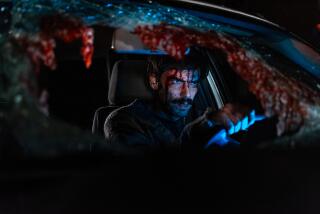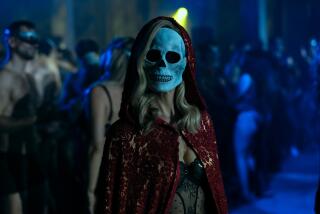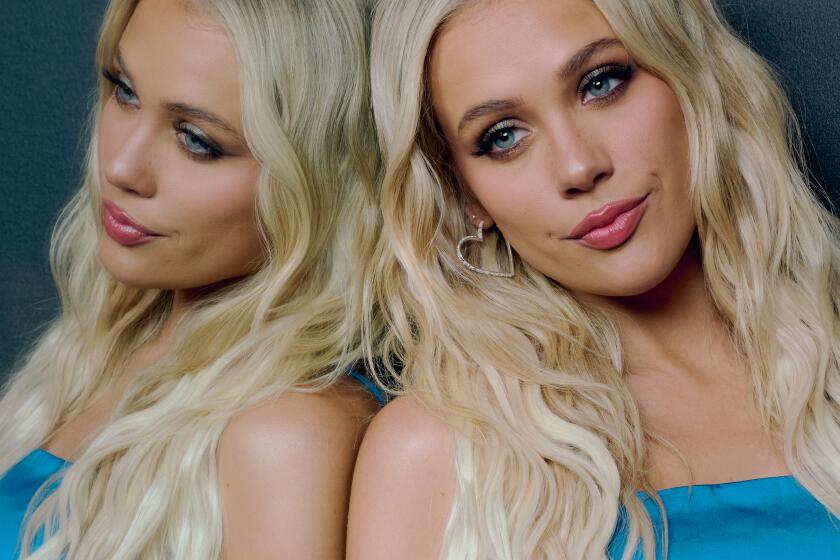Timothy Hutton on what possessed him to take on TV horror in ‘The Haunting of Hill House’

The actor says Episode 6 “shows who this person is and what he’s up against ... and the demands his kids have on him to explain the why of it all.”
Oscar winner Timothy Hutton isn’t particularly known for appearing in the horror genre — “The Dark Half,” “Secret Window” among the few exceptions in his 80-plus credits. Yet he agreed to play the older version of patriarch Hugh Crain in Mike Flanagan’s re-imagining of “The Haunting of Hill House” on Netflix.
“What makes a great [horror]? Someone who can really see it clearly,” Hutton said on a recent visit to the Los Angeles Times’ video studio. “A great director. A great writer … George Romero. Mike Flanagan. Someone who can bring the movie a certain way, the story a certain way, misdirect so that you’re kind of going with it, you’re committed to it, and all of a sudden this happens. Jordan Peele, what he’s done. It’s incredible.”
WATCH: 2019 Emmy Contenders video chats »
Flanagan’s “Hill House” bears little resemblance to the 1959 Shirley Jackson novel or the two movies that have been made of it since (both called “The Haunting,” in 1963 and 1999). The miniseries is a multilayered family drama that jumps among different eras of the Crain family, focusing on their traumatic time in the haunted house more than 20 years ago and being drawn back to it in the present day. The cast includes Carla Gugino as the mother and Michael Huisman, Elisabeth Reaser, Kate Siegel, Victoria Pedretti and intriguing find Oliver Jackson-Cohen as the adult versions of the children. The father, Hugh, is played by Henry Thomas in flashback and Hutton in the present.
Hutton said Flanagan’s filmmaking helped him express the inner workings of the older Hugh.
“The beginning of Episode 6, when he arrives and he sees all of [his surviving adult children] for the first time,” Hutton said. “The audience knows who he’s in the room with, but what he sees and what the camera sees him seeing is different. In one moment, it’s people of a certain age, and the next moment, his vision takes him back [to their childhood]. And then he recovers from it, and now it’s normal again and the people of a certain age and time are back in the room — and it’s all done in one shot, without a cut. The way in which Mike Flanagan designed that was really incredible.

“But in terms of Hugh, a scene that really shows who he is and his state of mind, that’s the moment that he is coming back to them … and then what goes on in the rest of that episode really shows who this person is, and what he’s up against, and how much he’s going to share, and how little he’s going to, and the demands that these kids have on him to explain the why of it all.”
The series may well be remembered at awards time for its outstanding cinematography and production design, which Hutton praised — he pointed out that the entire, sprawling house was a set, not an existing structure: “That was a fully constructed house on a stage … you walked into this massive soundstage, and there was this mansion built inside of it.”
He said, though, that ultimately it was how much the audience invested in the characters that would determine just how haunting “Hill House” would be.
“The more real the characters are, the more we’re going to be scared, the more we’re pulled into their story and invested in them, and care about them, we’re concerned about them. Either we like them or we dislike them. We are interested in what they’re doing. And then you add great cinematography and sound design and hints at something looming ahead, all of those great little things, those tricks that are done that work so effectively … if it doesn’t work, it really doesn’t work.”
Especially with supernatural stories, he said, “the more something that’s paranormal can be presented as normal and that we really want to know what the characters are doing and it feels real, then the more disturbing it’s going to be.”
To see the full interview, click on the video below.

More to Read
From the Oscars to the Emmys.
Get the Envelope newsletter for exclusive awards season coverage, behind-the-scenes stories from the Envelope podcast and columnist Glenn Whipp’s must-read analysis.
You may occasionally receive promotional content from the Los Angeles Times.









